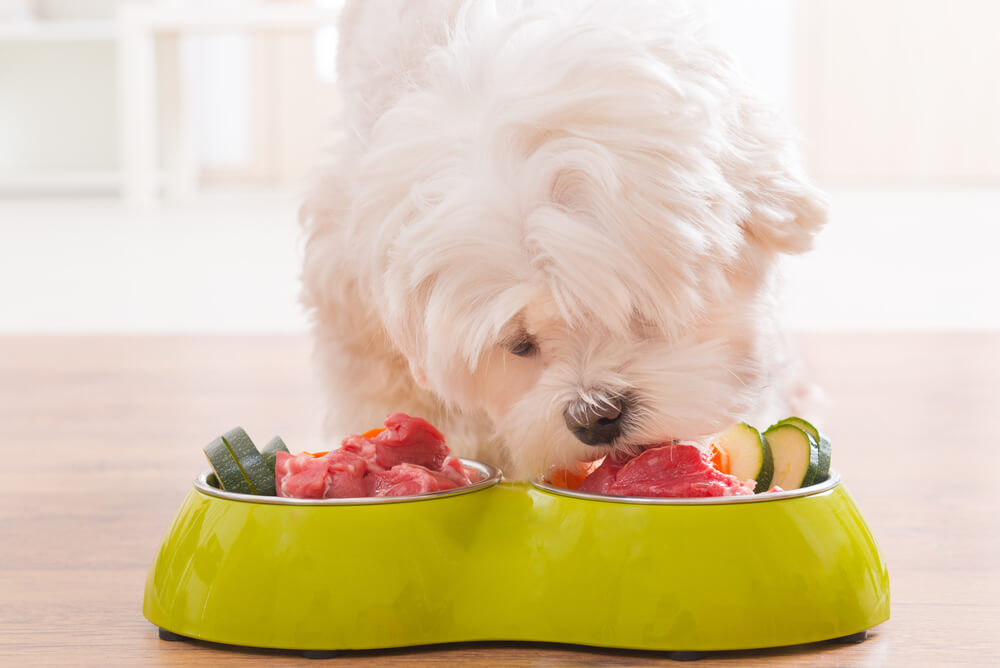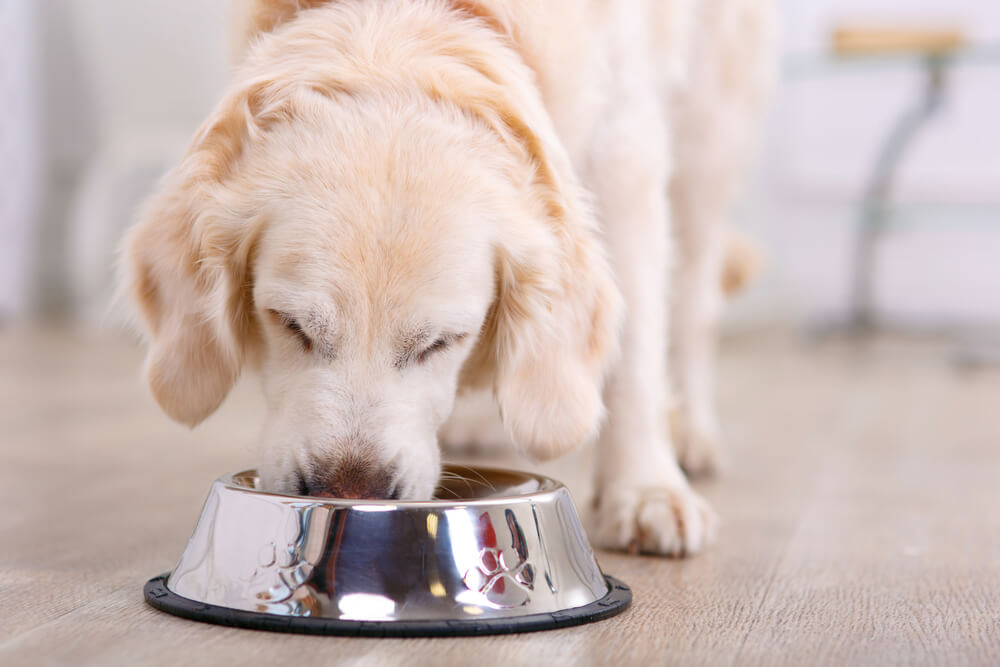How to Transition Your Dog to a New Food

Table of Contents
Listen To The Article
Introduction to How to Transition Your
Dog to a New Food
In their first few months of life, puppies need good quality puppy food to help them grow and develop strong bones and muscles.
Also, a diet of puppy food helps lessen the risk of health problems caused by obesity, such as diabetes and joint problems.
It also helps protect against bloat (gastric dilation-volvulus), a life-threatening condition in which the stomach swells and twists.
Changing your dog’s food can be a difficult task because it can upset your dog’s stomach and create digestion problems.
This is especially true if you try to switch the food too quickly or all at once.
Take some time to do a little research and figure out how to gradually switch your dog’s food so that it will affect your pet minimally.
To ensure your pet is getting all the right nutrients they need to live their very best life, your veterinarian might recommend a different food than what you’ve been serving up.
But hold the dinner drama!
Changing your dog food doesn’t have to be huge to do but there are some steps pet parents should take to make the transition as smooth as possible.

The Right Way To Switch Dog Foods
Don’t be worried that you don’t know how to switch dog food. It becomes easy in a short period of time.
Although you’ll be anxious to get the process started, switching dog food is a process.
In order to see the difference your new food can make in your dog, please allow 7 – 10 days to ease the transition from his current food.
Each day, simply feed a little less of the previous food and a little more of the new food until you’re feeding the new food exclusively.
This gradual transition will help avoid unnecessary stomach upsets or dietary problems.
How to Change Your Dog’s Food
Immediately switching your dog’s food can cause gastrointestinal upset such as vomiting, diarrhea, and a decreased appetite.
As soon as you decided to change your dog’s food, you should transition to the new diet gradually in order to give your dog’s system time to adjust to the change.
Usually, these transitions should happen over 5-7 days during this transition, you will gradually incorporate more and more of the new food by mixing it with your dog’s current diet.
Some dogs with sensitive stomachs, food allergies, or other gastrointestinal diseases may need an even longer transition period.
The key to a good diet transition is monitoring your dog’s individual response.
If, at any point during the diet transition, your dog displays concerning signs such as changes in appetite, vomiting, or diarrhea, you should proceed more slowly and if you have transitioned gradually and your dog is still experiencing stomach upset, it is best to consult with your veterinarian.
In some cases, it may be necessary to choose a different diet.
There are plenty of reasons you may want to switch your dog’s current food.
Perhaps your dog has been diagnosed with a health issue, you’re looking to switch to more premium dog food, or maybe your dog is just getting older and needs something that better fits their changing nutritional needs.
It is important that your dog switch their food gradually. Switching dog food too fast can lead to tummy trouble for your furry companion.
This is particularly important after adopting a dog from a shelter; while it is often a good idea to keep your dog on the same food that he was fed at the shelter if you do decide to feed something else you might need to be even more patient.
While a dog is adjusting to a new home, he might have anxieties and as a result digestion issues. Because of this reason, many pet parents may blame the food for digestion issues.
While that can be possible, it’s best to not do a bunch of switches in the first month or so until your dog starts to get familiar with its new home.
To transition, mix your dog’s current food with their new food. Over 7 days, gradually decrease the amount of the current dog food while increasing the amount of new dog food.
Schedule for Changing Your Dogs Food
Day 1: Feed 1/4 cup of the new food mixed with 3/4 cup of the current food
Day 2: Feed 1/2 cup of the new food and 1/2 cup of the current food
Day 3: Feed 3/4 cup of new food and 1/4 cup of current food
Day 4: Feed 1 full cup of the new food
The percentages in the timelines above refer to the quantity of food fed.
For example, if before the transition you were feeding 2 cups of the current food, then on day 1 of the transition you would feed 75% of the current food which is 1½ cup.
This leaves ½ cups of the new food to fill the bowl.
Regardless of which diet transition schedule is used, it is generally recommended to give your dog a pet-specific probiotic during the transition to help your dog’s stomach break down and digest the new ingredients in a healthy way.
Consult your veterinarian to find the best probiotic that is recommended for your dog.
Which Is the Best Dog Food?
Choosing an appropriate diet for your dog is a complicated process.
The sheer number of dog food options available is overwhelming.
Unfortunately, there is no one diet that is “best” for every dog. Just like humans, dogs are individuals and their dietary needs vary depending on factors such as age, health, and personal preferences. Sometimes a dog is a picky eater in pet food.
Finding the best pet food for your dog can be a lengthy process, but with the right tools and a gradual transition, you can ensure the switch is successful.
During the transition, be sure to monitor your dog’s appetite, behavior, and stool quality to help determine whether the new diet is the right choice for your dog.
As always, your veterinarian is your best resource for information regarding your dog’s health and nutrition.
The proof is in the Poop
The best way to monitor your dog’s digestive health is to pay attention to the quality of the stool.
While minor variations in stool color and consistency are normal, any major changes can indicate a problem that needs to be addressed.
A great way to evaluate your dog’s stool is to use a Fecal Scoring Chart. An ideal fecal score is 3-4.
Lower numbers may indicate dehydration or constipation, while higher numbers are indicative of gastrointestinal upset, which can be due to a variety of factors.
If your dog’s stool is consistently outside of the normal range, it is recommended that you consult your veterinarian regarding your dog’s digestive health.

Special Considerations And Additional Tips
Some pets may be easier to transition than others, closely monitor your pet during the transition to ensure they are getting the nutrition they need.
If you notice your pet refusing to eat the new food, or if your pet starts vomiting or has diarrhea or constipation, you should slow down the rate you are switching the food and if problems continue, consult with your veterinarian.
Dog Food Allergies
Pets have allergies and food sensitivity just like we do, and they can be either environmental or food-related.
Some pets do better with grain-free foods.
The most common food allergies include beef, dairy, wheat, and chicken.
If you suspect your pet has a food allergy, you may need the assistance of a veterinary allergist or dermatologist.
A special elimination new diet may be necessary temporarily in order to pinpoint any allergens.
Then you can choose the food that will be best for your pet, with the help of your veterinarian.
New Life Stage
As pets transition from puppies and kittens to adult dogs, their nutritional needs change, and a dog’s diet less rich in calories, protein and fat are appropriate.
Switching your pet to an adult formula can usually happen around one year of age, although it depends on their breed, size, and their sex.
Smaller dog breeds tend to reach adulthood more quickly than larger dog breeds.
Just to be safe, it’s a good idea to consult your veterinarian before switching from a puppy or kitten formula to an adult formula.
Pets who are aging and have reached the mature adult, senior or geriatric stage of life also have unique needs.
On average, dogs are considered seniors between the ages of six and 10.
Giant breed dogs can be considered geriatric as early as six years of age.
Weight Management
While some causes of weight gain in pets can be prevented (such as lack of exercise or overfeeding), others are sometimes unavoidable.
Older pets, less active pets, spayed or neutered pets, and female pets are more prone to experience weight gain.
In some cases, you may need to switch your pet to a weight management formula to help maintain a healthy weight.
Your pet may also be underweight and need a special diet like a raw diet, dry dog food, and a wet diet.
Again, always consult with your veterinarian before switching your pet to a new formula some dogs have a sensitive stomach.



